Guiyang
I had been following the development of southwestern Guizhou into a cloud computing center in Southwest China for some time. This January, I finally got to visit for a quick trip. Through pre-arranged contacts with several academics at local universities, I was able to get a tour of both Gui’an New Area, where most of the data center construction is, as well as learn a bit more about some of the interesting architectural and urban elements of Guiyang, the provincial capital.
The mountainous province of Guizhou has long been one of the poorer provinces in China, lacking port access (river or maritime), and peppered with remote villages of various minority groups (such as the Miao, Buyi, Tai, and others). The province has also relied heavily on the state sector, especially in energy and mining. In the 1960s, Mao began a policy known as san xian “third front” which involved relocation of critical defense-related industries to the interior. Guizhou, along with Sichuan and Shaanxi was a major focus of the plan, making Guiyang into an industrial center. The city of Liupanshui 六盘水 in Guizhou West of Guiyang also became a major steel center from the plan. By the 2000s, inland provinces lagged far behind coastal China in economic growth during the reform and opening up period. Today inland China is seeing more growth and investment as China moves toward its “dual circulation” economy 国内国际双循环 and high prices in coastal cities drive youth to seek opportunities in second or third-tier cities.
Guiyang has not received much attention from scholars of urban China. But the city, built around numerous hills, feels like a sort of mini Chongqing—albeit without any buildings bisected by monorails. There are also a host of strange quirky buildings from the boom years of investment—a giant French chateau style mansion (called the White House) built against a mountain in central Guiyang1, a mall with a roof like a dolphin (and referred to as 海豚广场 dolphin plaza), and a “twin towers” development. Huaguoyuan 花果园, an extremely high-density residential urban renewal project that features tall towers wedged between mountains and large boulevards at the Western edge of the old area of Guiyang, is apparently China’s largest residential community with a population of around 400,000. As my host who spent years away from China but grew up in Guiyang told me, “all of this development has happened within a period of about 10 years, so its been jarring to return to the city, its totally different.”
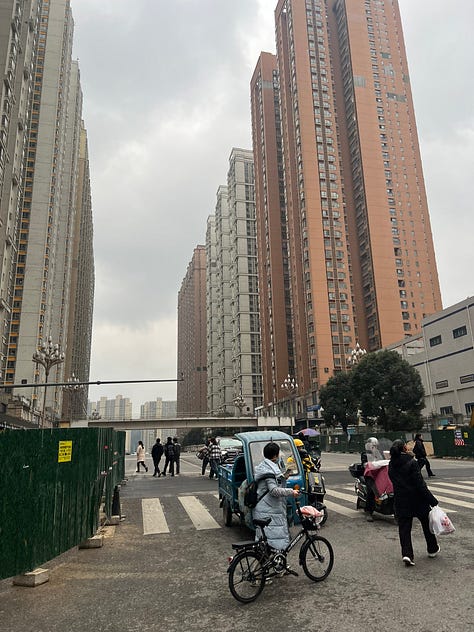
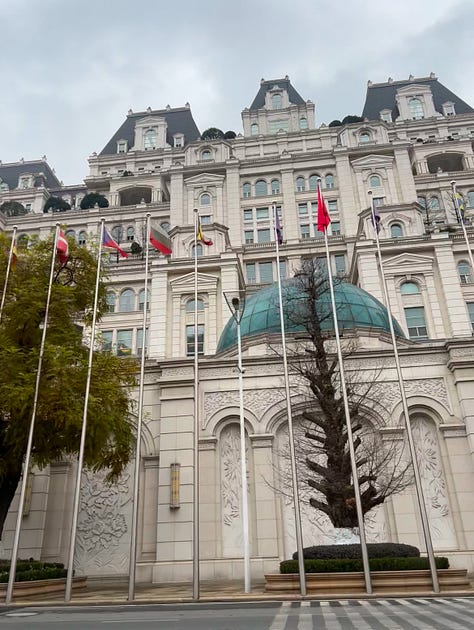
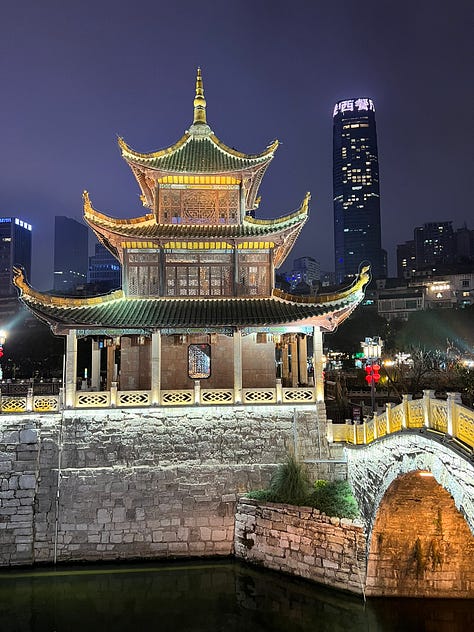

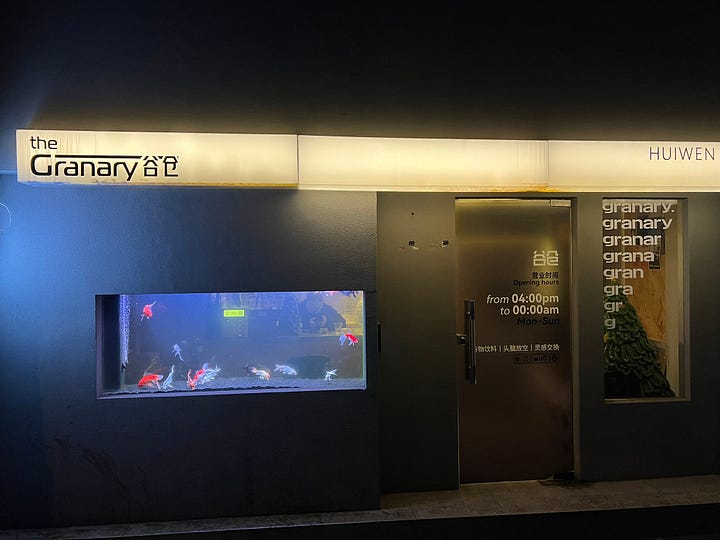
Gui’an New Area
Today, the relocation of cloud computing to Gui’an New Area in Guizhou can be seen as the contemporary iteration of the third front. At a time of tension and rivalry between the West and China, idea of relocating critical digital infrastructure to the country’s interior made perfect sense. Guizhou, like other areas of the East-West Compute Plan, I wrote about here, has advantages in climate and energy resources that are also favorable for data center construction. At a higher elevation, Guizhou is cooler than much of the Southwest and there are ample hydropower resources.
When Gui’an New Area was approved as a National New Area by the State Council in 2014, plans to build it into a base for cloud computing were already underway. As early as 2012, provincial leader Li Zhanshu (a close former associate of Xi from Zhejiang) was pushing the province to seize national initiatives on data centers as a growth engine. Chen Min’er, another Xi associate, would become Guizhou’s party secretary. And Chen Gang, a former executive of Beijing’s Zhongguancun high tech cluster, would become Mayor of Guiyang. As described in this article by Kevin Liu of Guizhou University (2024) “the central and local government’s supportive policies, as well as the decisions made by key political figures and their networks, all played critical roles in Guizhou’s efforts to become a data centre cluster.” 2 Gui’an eventually attracted investment from Huawei (founder Ren Zhenfei hails from Guiyang originally), Tencent, China’s 3 telecom operators, Apple’s first China data center, and a Foxconn Factory.

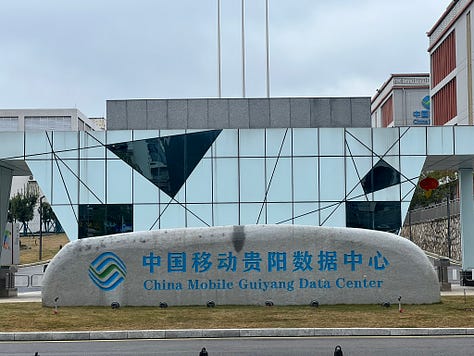

In the last few years, the area has undergone some changes. The Foxconn Plant, an early anchor and provider of substantial employment, has for now shuttered. Data center construction continues, with new enterprise data centers of Midea, China Southern Power Network, China State Power Investment Corporation Limited. Data centers of China Construction Bank, and Bank of Communications are also under construction. However, the sprawling 1700 sq km- Gui’an New Area lacks the feeling of a vibrant urban area and is still mostly composed of relatively dispersed industrial parks, data centers, and a few isolated pockets of commercial and residential development. Villages that were not demolished exist in the interstitial spaces between newly built wide roads and highways, as written about by geographer Tim Oakes.3
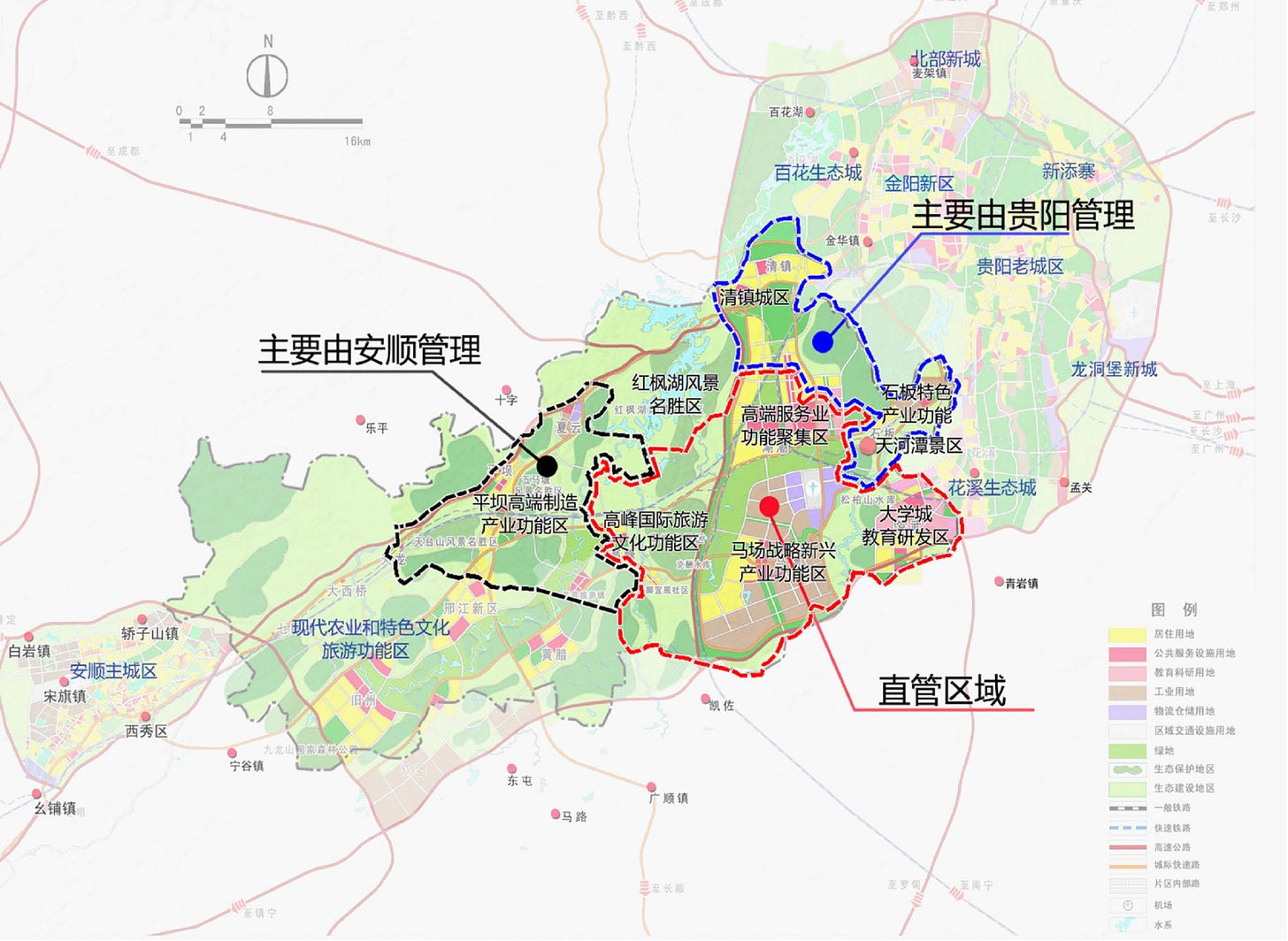
Apparently the mansion has been redeveloped into a hotel run by Accor (https://press.accor.com/greater-china/h1-styltext-aligncenteraccor-debuts-emblems-collection-in-guiyang-with-the-new-brands-first-hotel-in-the-world-h1/?lang=en)
Liu, Kevin Ziyu. 2024. “Making the China Data Valley – The National Integrated Big Data Centre System and Local Governance.” Journal of Contemporary Asia, February, 1–23. doi:10.1080/00472336.2024.2311808.
Oakes, Tim. “The National New Area as an Infrastructure Space: Urbanization and the New Regime of Circulation in China.” The China Quarterly 255 (September 2023): 575–90. https://doi.org/10.1017/S030574102300098X.






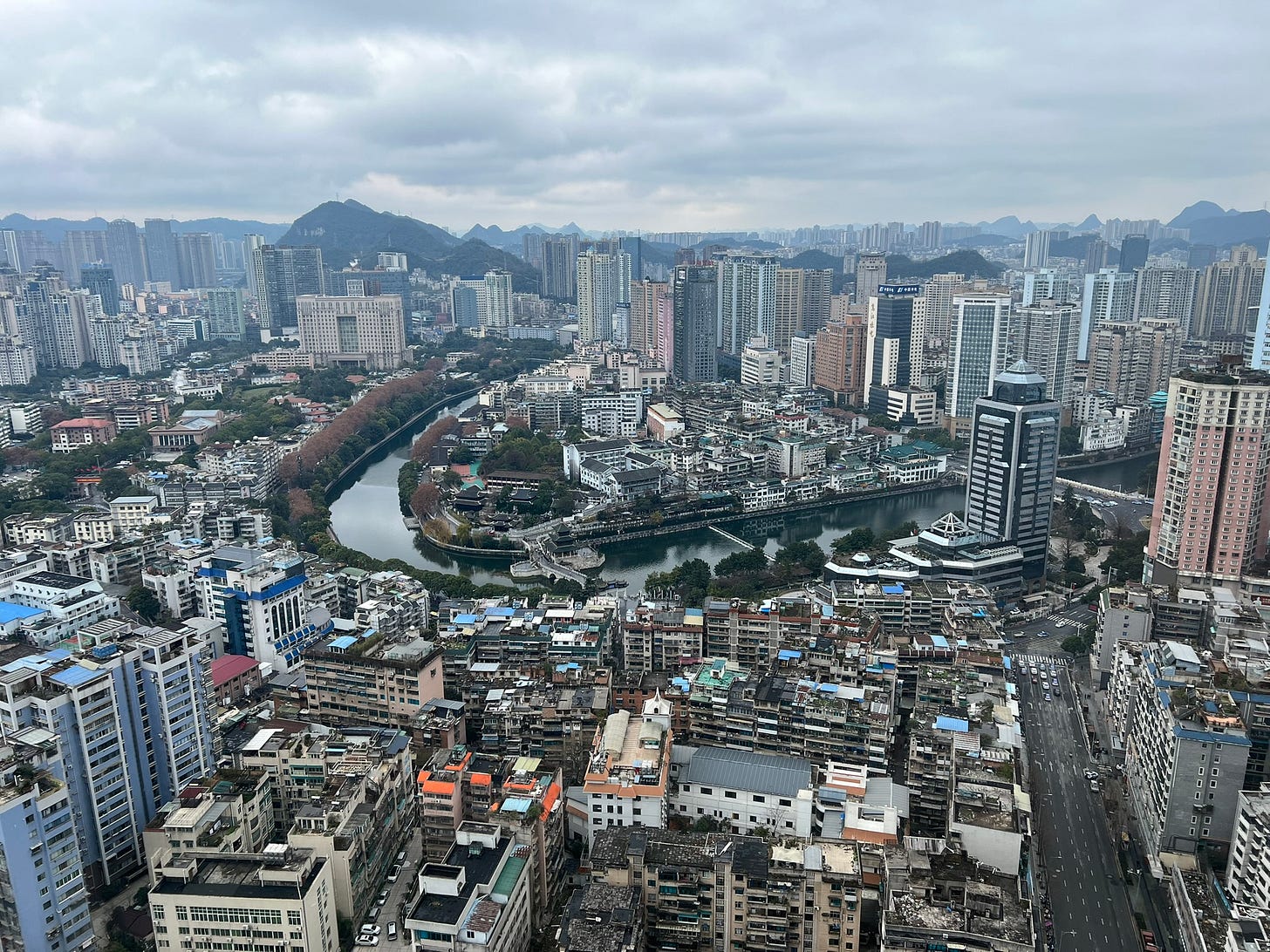
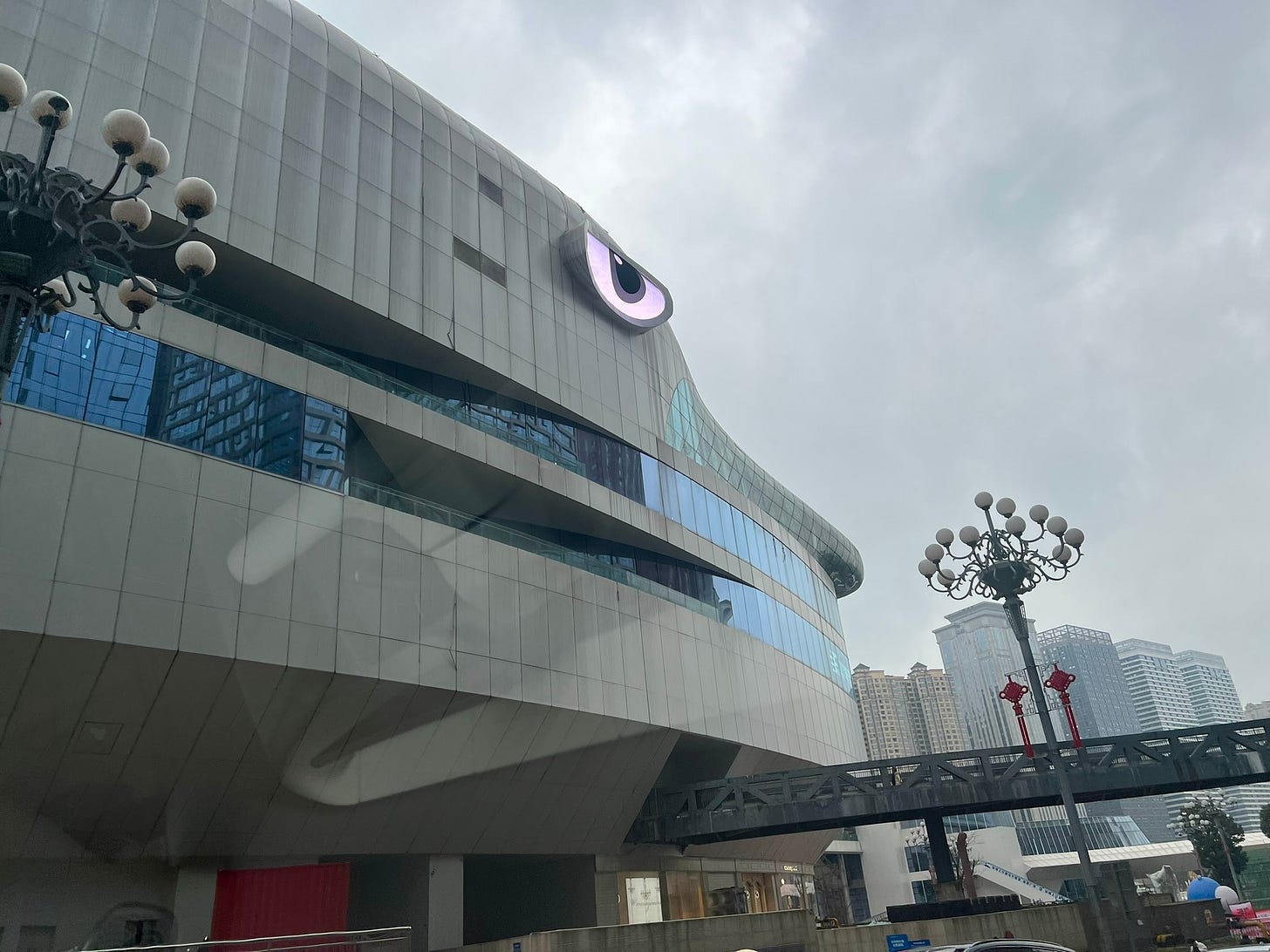
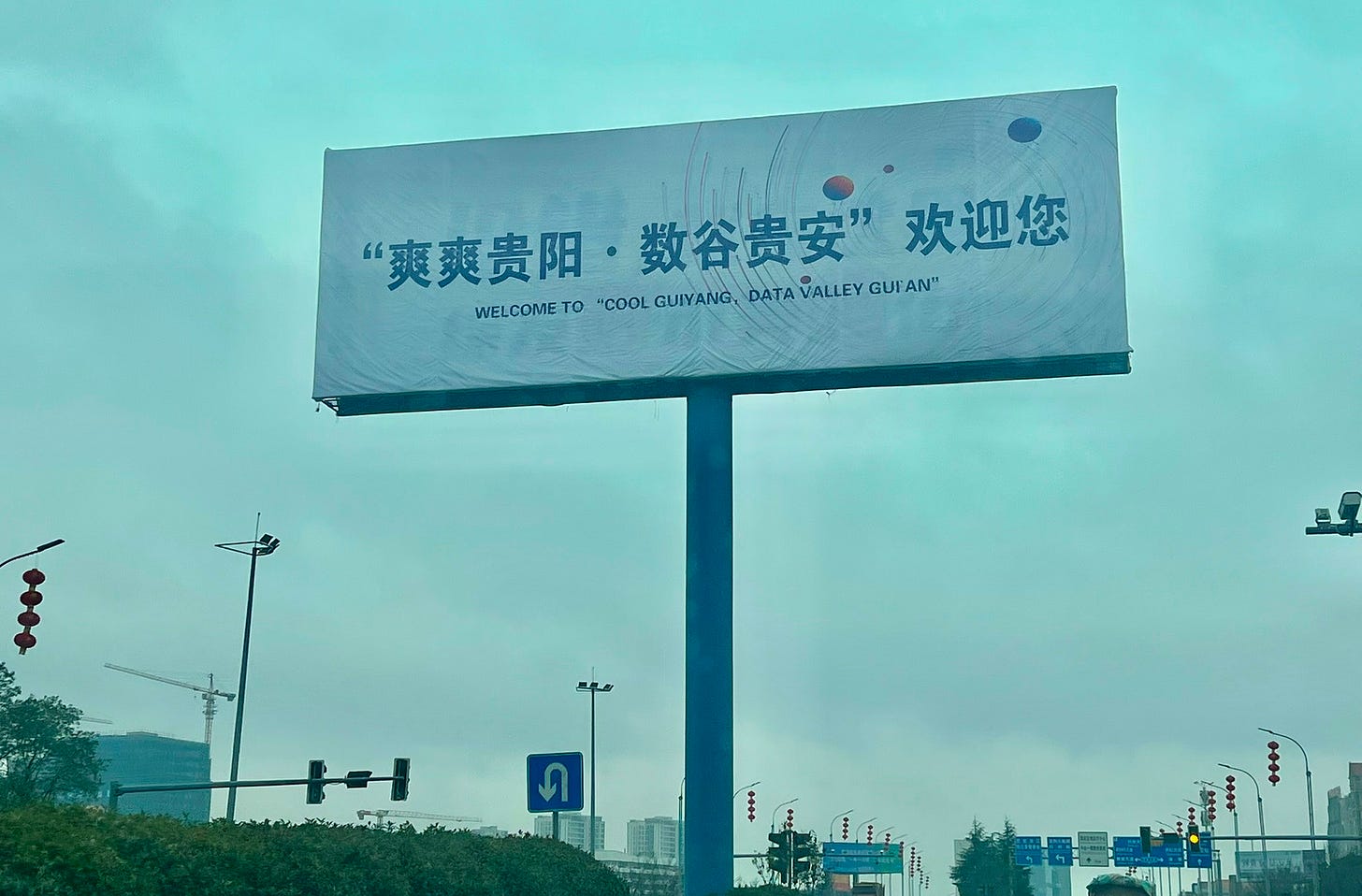

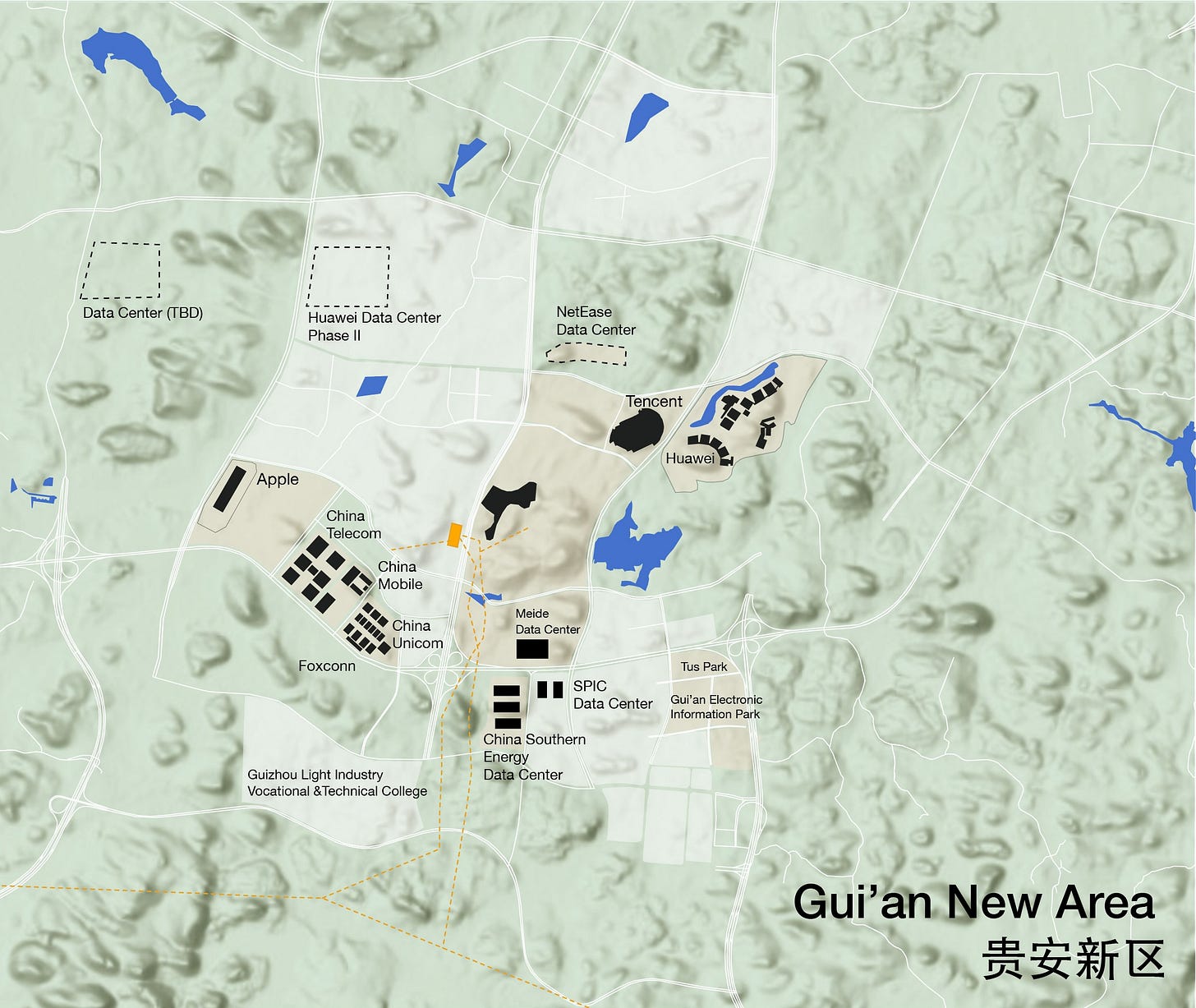
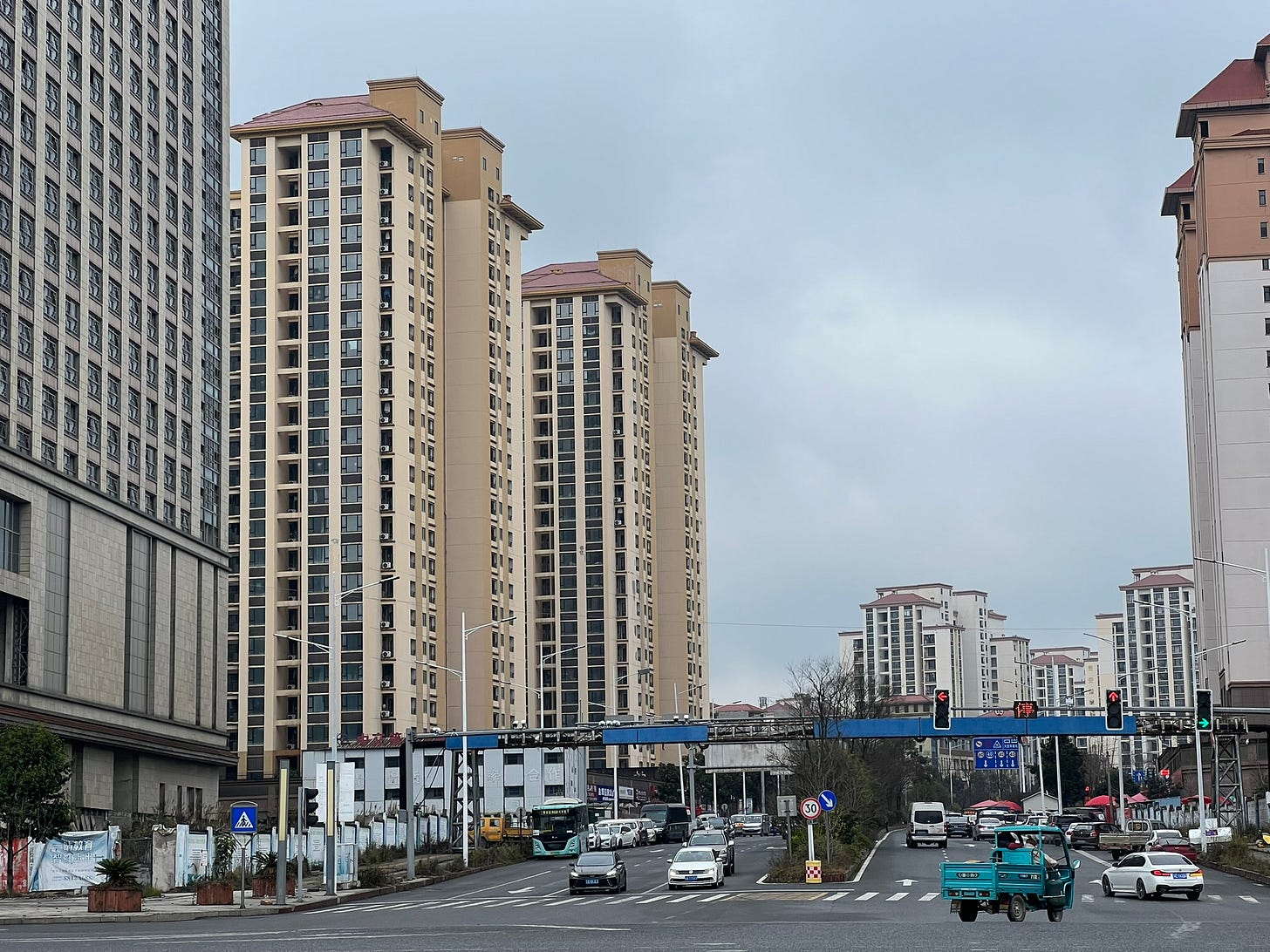

This appears to be a trip squarely in the past tense (and organized, anyhow), but if you find yourself in Guiyang again… definitely reach out, we have a myriad of food recommendations :)
Good-looking buildings